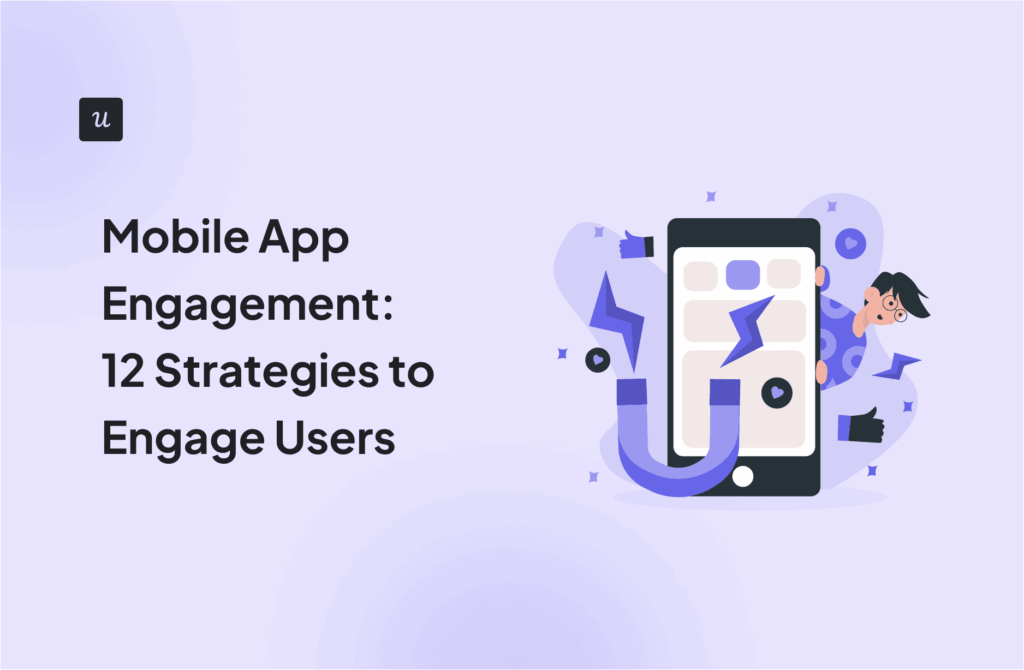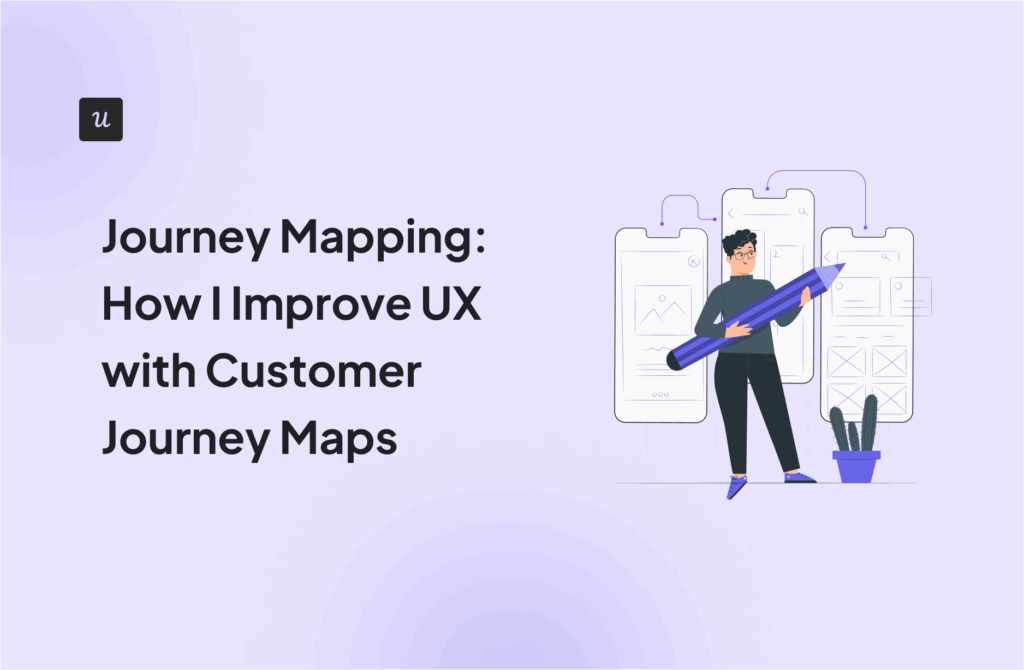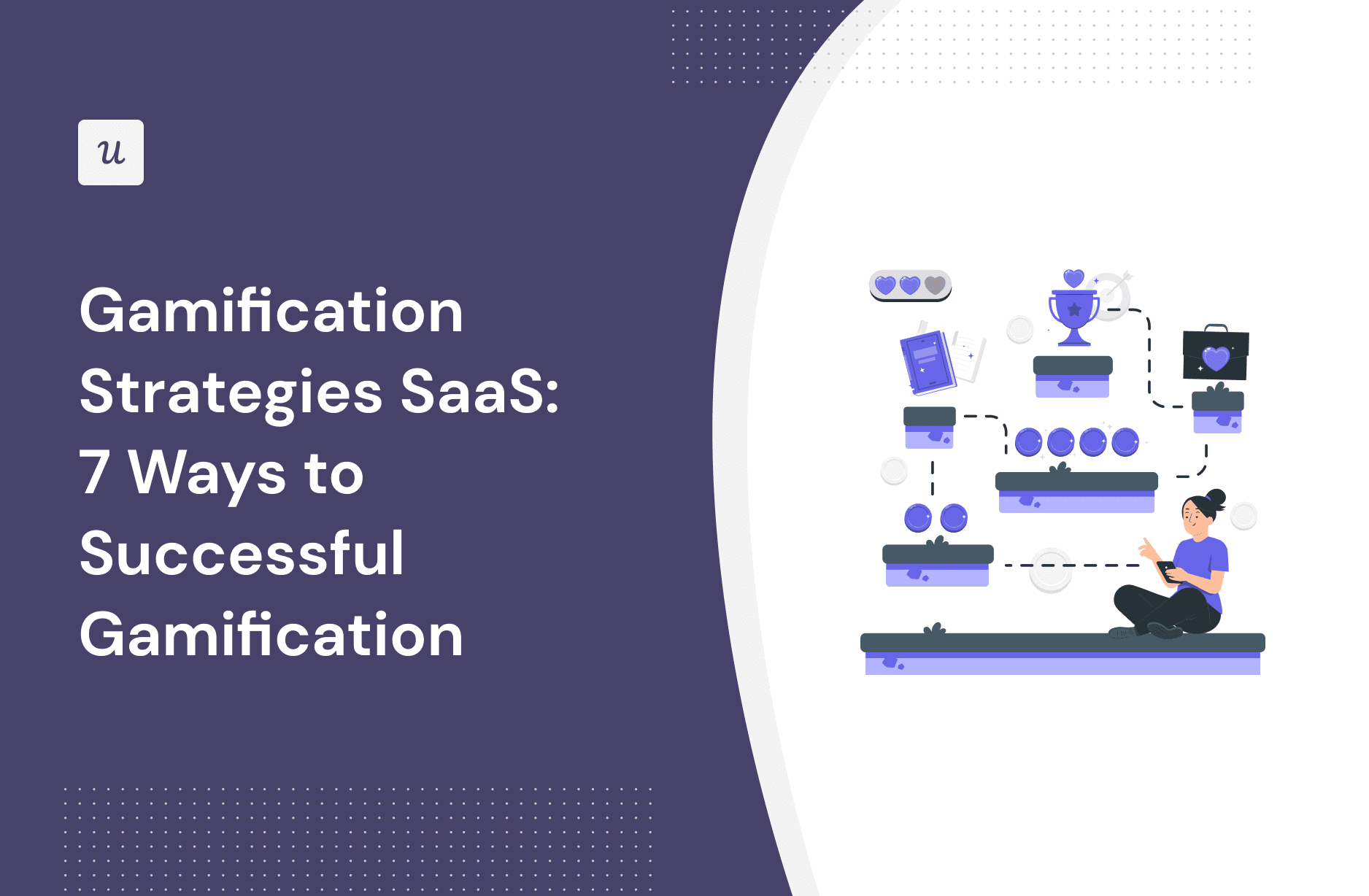
Implementing gamification strategies is not just a trend in UX design—it’s a powerful tool that’s here to stay.
When done well, it can unlock new levels of user engagement and transform how users interact with apps. So how can you do it?
Let’s explore how gamification works in SaaS and then look at some strategies that you can implement successfully.
Try Userpilot Now
See Why 1,000+ Teams Choose Userpilot

What is gamification in SaaS?
Gamification is the implementation of gaming elements and mechanics within apps to enhance user engagement, motivation, and loyalty. The idea is to leverage the intrinsic appeal of games—challenges, rewards, competition, and achievement—and apply them to non-game contexts such as work or learning.
What are the benefits of gamification for SaaS?
Gamification has the potential to improve both the user experience and the business’s bottom line.
When properly implemented, the benefits are huge. Let’s have a look at them below.
Increased activation rate
Gamification techniques can significantly boost the activation rate during the onboarding process.
For example, you can use an activation checklist to guide users through essential features and reward them for completing tasks. This way, going through a gamified onboarding flow brings a sense of achievement and satisfaction—transforming the initial learning curve into an engaging, interactive experience.
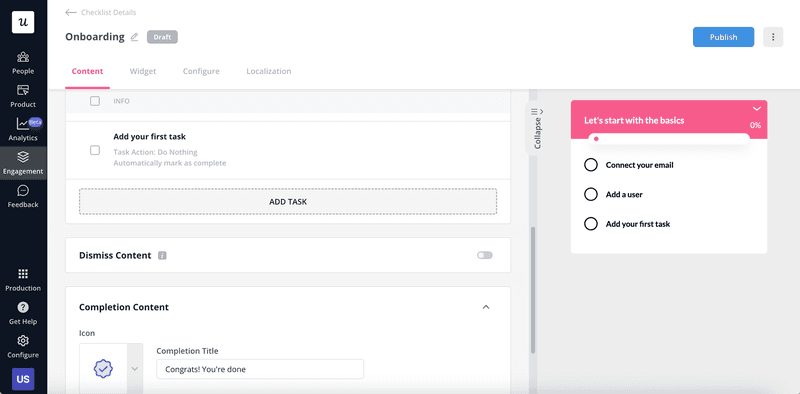
More user engagement
The main benefit of gamification is that it makes mundane tasks more engaging and complicated tasks more approachable.
This is because it adds positive reinforcement—like points or celebration messages—to encourage repeated action, which leads to more product usage and user engagement in the process.
For instance, you could celebrate when users complete specific actions within the app and take that momentum to ask them to do something else. In the end, you’ll significantly increase their interactions and time spent on the platform.
Here’s how Calendly archives the above:
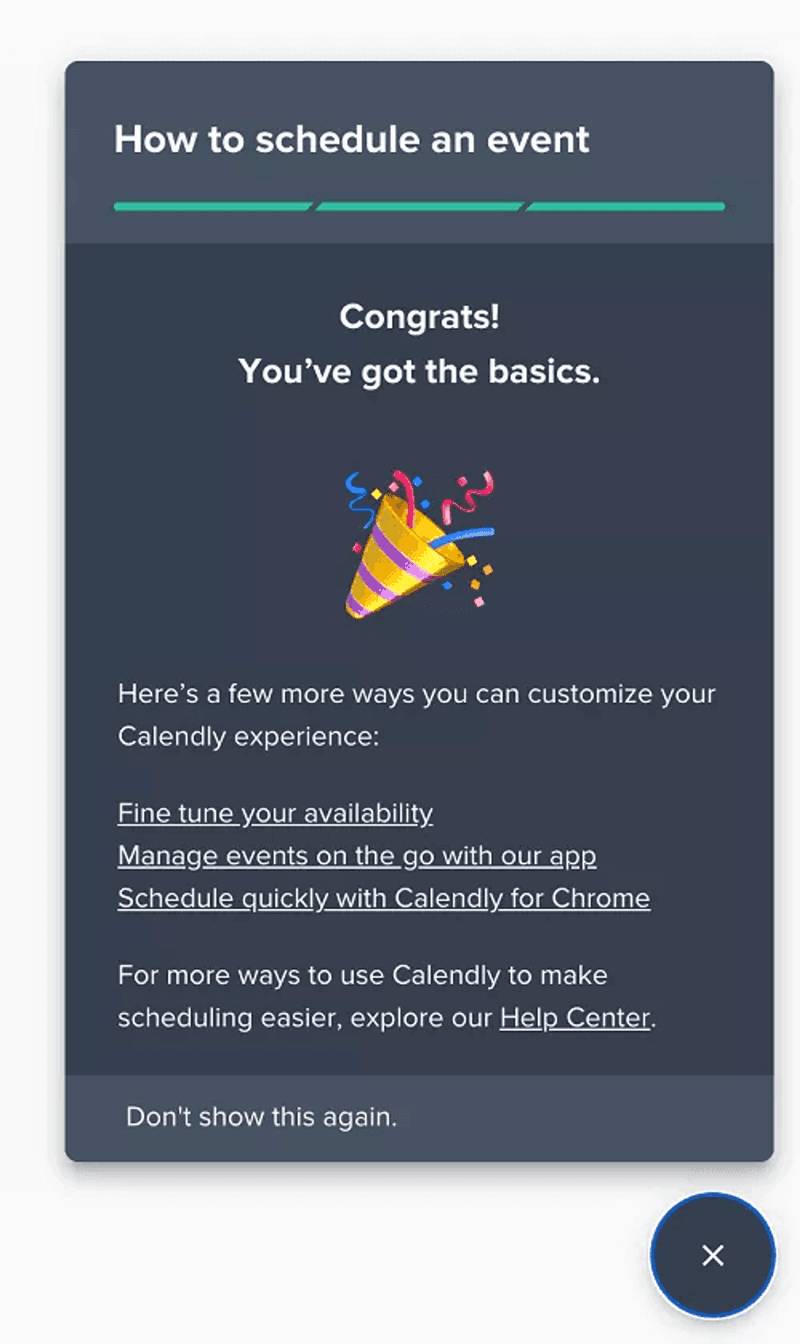
Higher satisfaction rate
Besides cultivating more user engagement, gamification’s positive reinforcement loop leads to higher user satisfaction.
The reason is simple: engaged users tend to extract more value from the product, resulting in a more satisfying experience.
For example, see how Todoist introduces Karma points to not only motivate users but also provide a tangible measure of their progress and achievements. So when users follow through with it, they’ll be more likely to be successful and realize the value of the product.
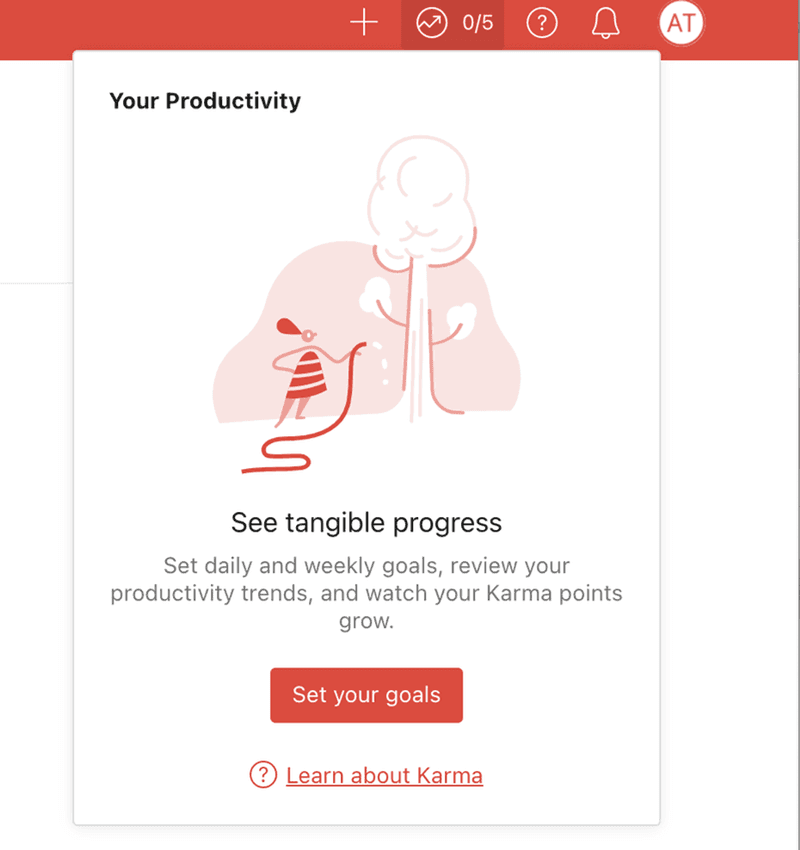
Increased user retention and LTV
As gamification leads to higher satisfaction, your user retention rates and customer lifetime value will also increase.
Engaging users through gamified experiences ensures they remain interested and connected with the platform for longer periods—which in turn makes them spend more on subscriptions and become more valuable customers.
This way, you won’t only be able to sustain more revenue but also reduce customer acquisition costs in the long run as users start sharing your product with their networks.
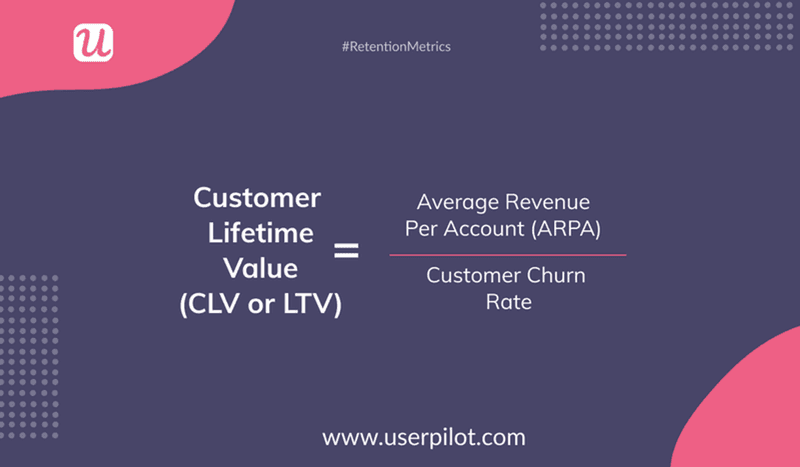
What gamification components can you use?
Now, how does gamification work, and how is it designed? Well, there are three elements that determine the game experience:
- Dynamics. Which builds the emotions, goals, and behaviors that the game mechanics are designed for (e.g. competition, progression, storytelling, success).
- Mechanics. Which involves the specific process that leads to action and the desired goal.
- Components. Refer to the format of the game mechanics and can have many forms.
Once you understand this, you can design a solid gamified experience that can engage users.
So that said, let’s go over the different components that are most common in SaaS.
1. Progress bars and checklists
Progress bars and checklists offer users a visual representation of their achievements and tasks. They provide a sense of accomplishment as users progress toward their goals, making it particularly effective during onboarding or when introducing new features.
Different types of progress bars, such as linear or circular, can be used depending on the user interface and experience design. Similarly, checklists can be employed in various forms, such as initial onboarding checklists or secondary task lists, helping users stay organized and motivated.
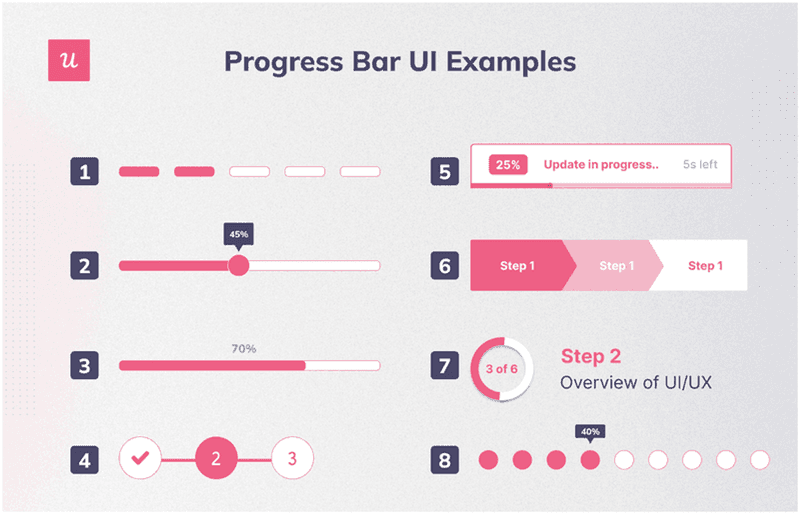
2. Points and scores
Points and scores are classic gamification components that create and maintain momentum inside your app. They provide a sense of loyalty and achievement and encourage users to continue engaging with the software.
For instance, this can involve implementing a leveling system based on points, or scores that can incentivize long-term use and deeper exploration of the platform’s features—and then reward users for their engagement (just like Evernote’s point-based loyalty program below).
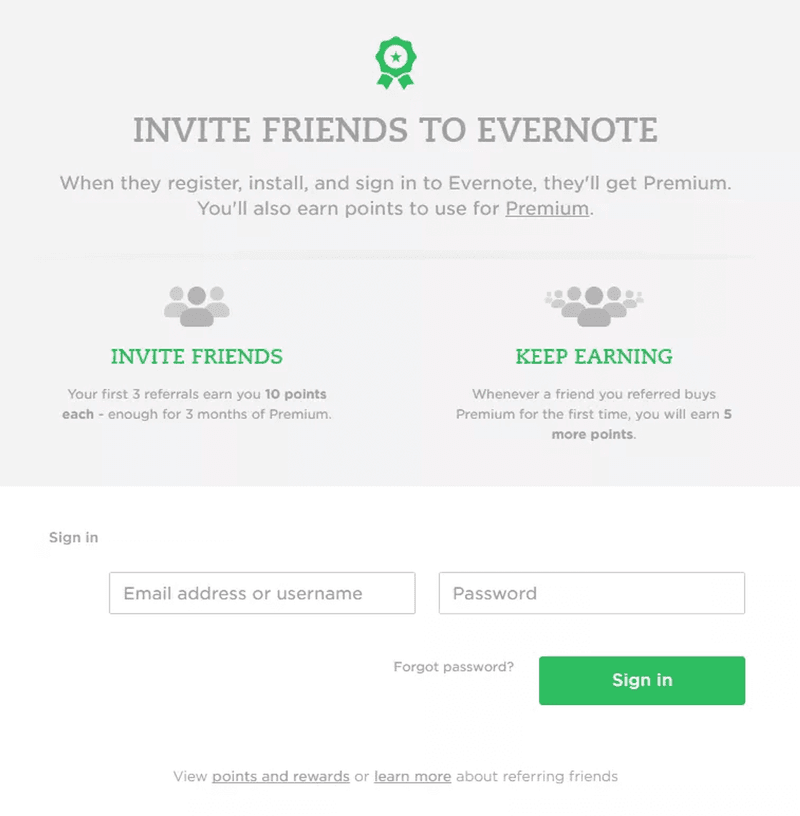
3. Leaderboards
Leaderboards introduce a competitive element to your app. They add a social dimension by allowing users to compare their achievements with others and incentivize them to go the extra mile.
When done well, competition not only fosters a sense of community but also encourages users to engage more with the platform to improve their performance.
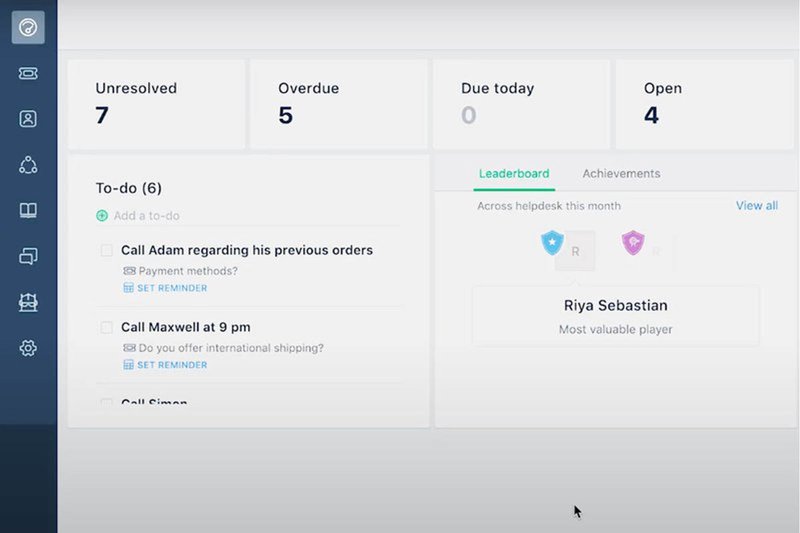
4. Badges
Badges serve as markers of accomplishment and progress. They communicate to users that they’re good at what they do and that their progress is recognized.
Plus, they can also be designed to be lost if not maintained, so it motivates users to keep actively engaging with the platform in order to stay on track.
This can apply, for example, to language learning apps that use badges to encourage regular practice and lesson completion.
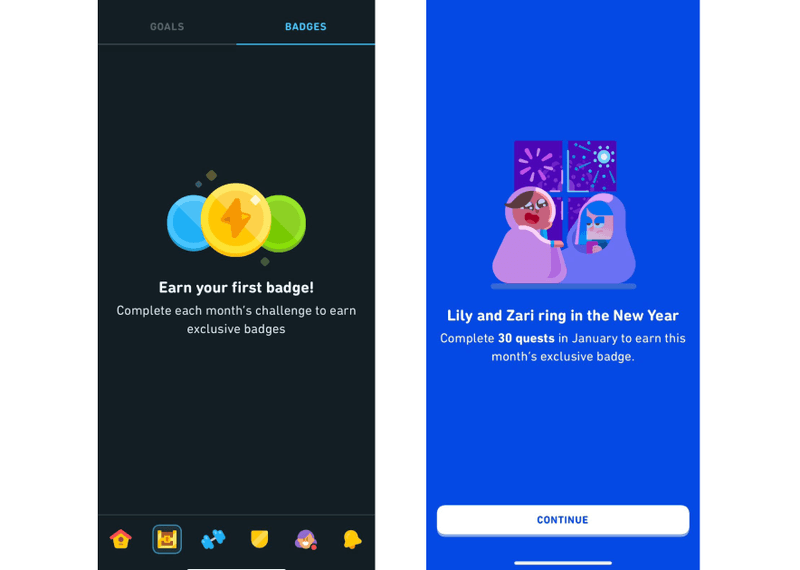
5. Rewards and celebrations
Rewards and celebrations in gamification can range from psychological rewards, like milestone acknowledgments, to tangible rewards, such as upgrades, discounts, or vouchers. These rewards create a positive reinforcement loop and can significantly increase user motivation and satisfaction.
For example, if you reward customers with discounts for following a checklist of tasks, they’d be more likely to engage and adopt your product.
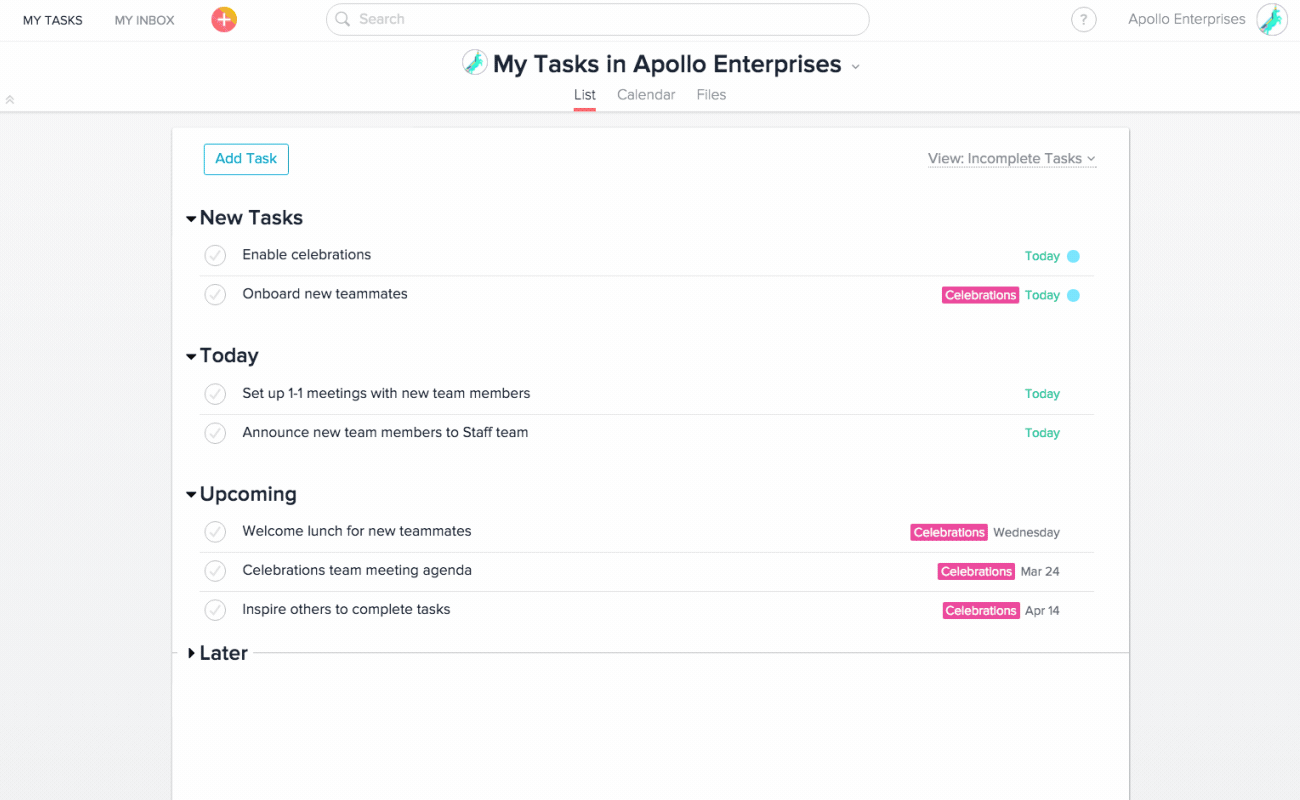
What are some gamification strategies you should know? [With examples]
How do you implement game components successfully? Let’s see some gamification strategy examples and learn from other SaaS brands doing it.
1. Show progress
We humans have an innate desire to see progress in our lives. As we’ve explained earlier, this can be reflected through progress bars, steps, checklists, and leveling systems.
This way, you can communicate how far the user has come and what remains to be achieved—pushing continuous engagement.
Example: Fullstory
Fullstory’s setup flow is excellent. It’s designed to go through each part of the process task by task without overwhelming the user. The UI clearly shows how much the user has done and how much is left for them to start using the app.
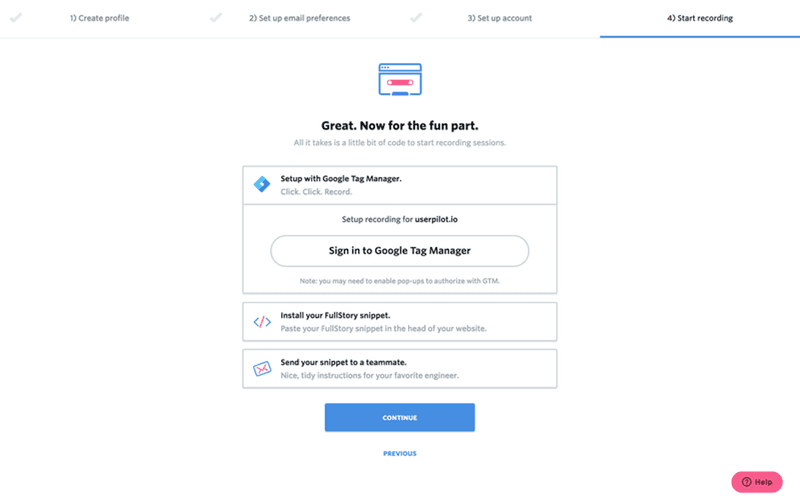
2. Promote healthy competition
As we know, competition can be a strong motivator. Displaying points, badges, and achievements publicly, can push users to participate more actively and increase customer loyalty.
This strategy not only rewards active users but also creates a dynamic and engaging community.
Example: Reddit
Reddit has a leveling system that rewards users with karma points and badges as they actively participate in communities and receive positive feedback. This has created a competitive environment where people can even farm karma points and collect badges just to show off—making Reddit such a big platform as it is today.
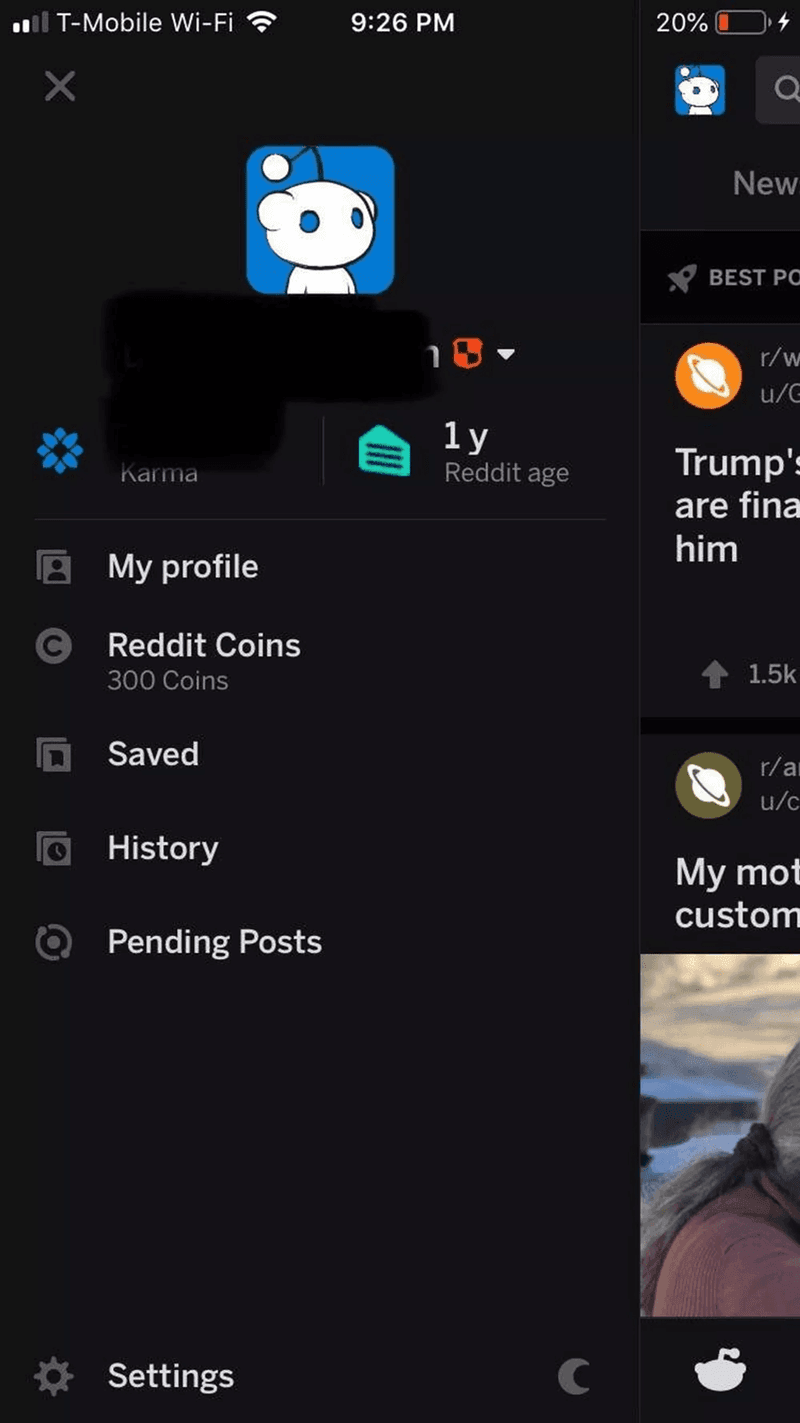
3. Follow the user journey
Celebrating your user’s milestone can add a touch of friendliness and feel-good emotions to your platform—making it more engaging in the end.
But if you need to include celebrations for completing onboarding, add interactive flows for feature adoption, or give rewards for retention—you need to be able to tell the journey stage and the specific touchpoint that users are at.
For this, mapping out the user journey is necessary to determine the most effective touchpoints for gamification, as it provides an intuitive map you can use to determine when the right moment to gamify the experience is.
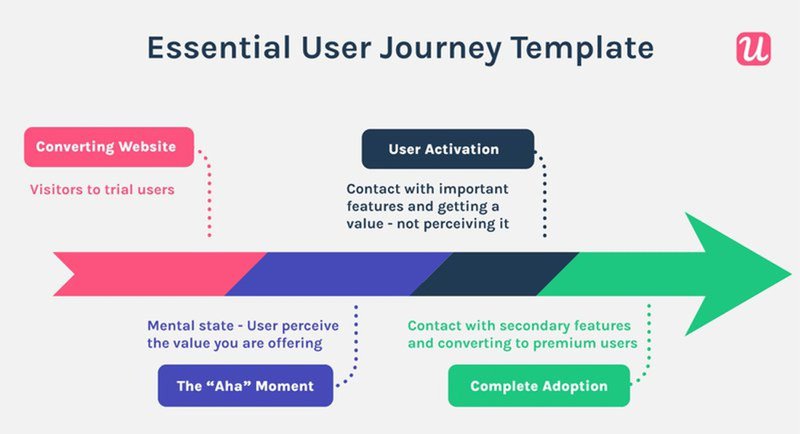
Example: Kontentino
Kontentino triggers a celebratory message right after you finish the onboarding process and then prompts you to learn how to create a blog post—encouraging product adoption.
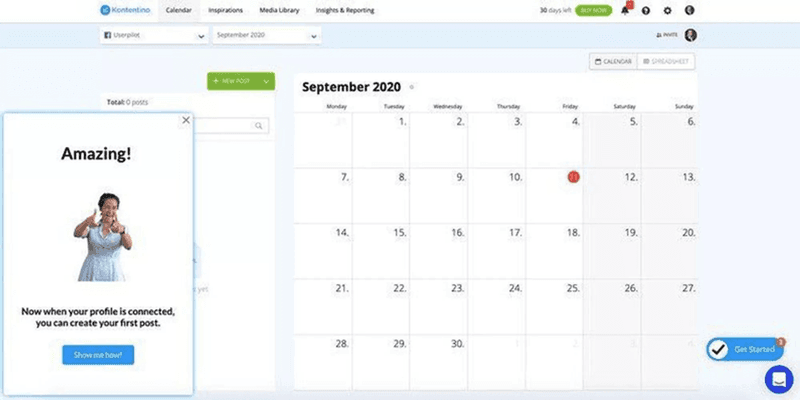
4. Personalize experiences
Personalization adds an extra layer of value, especially for gamification.
According to Richard Bartle, researcher at the University of Essex, there are four types of gamers (and can hugely influence your gamification strategies):
- Killers. Who are competitive and want to outdo everyone.
- Achievers. Who follow personal goals and want to optimize their performance.
- Explorers. They’re always trying to learn every aspect of the game.
- Socializers. Don’t care much about the tasks or goals as much as socializing with other people (e.g., sharing on social media platforms).
For this, you can segment your audience based on their player type, journey stage, or job to be done (JTBD) to provide a unique product experience that suits their gaming style. Using a tool like Userpilot helps you do this without coding.
Example: Stripo
Stripo congratulates new users who complete the tutorial, then invites them to sign up in order to access their template library—making them feel valued and motivated to proceed.
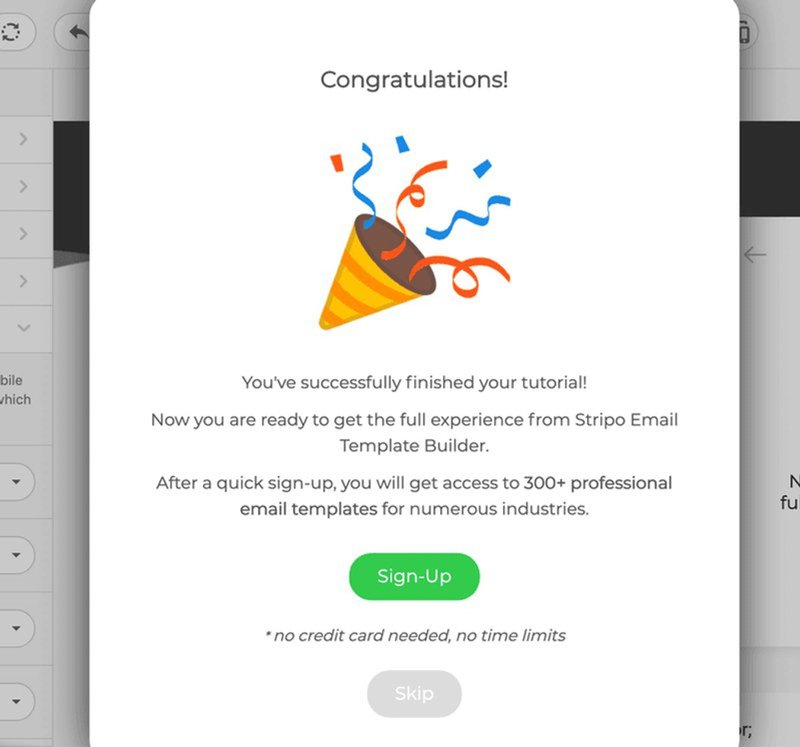
5. Design engagement loops
An engagement loop is an experience that motivates users to take action and continues to provide positive reinforcement to ensure they take the next step.
Gamification can involve rewarding users with points and trophies when they perform certain tasks, thus prompting them to repeat the action.
Example: Facebook
Facebook’s “top fan” badges are an excellent example of this, as they reward users for engaging with specific pages. This can lead to more users feeling the need to interact with posts and give likes if they want to get the “top fan” label.

6. Tap into emotions
Now, depending on your audience, gamification techniques can be leveraged to tap into different types of emotions.
Be it success, curiosity, achievement, or surprise, triggering these at the right moment and to the right audience can make the gamification experience more diverse and thus more engaging for users.
Example: Duolingo
Duolingo taps into multiple emotions, such as pride, achievement, and especially competition, to keep users engaged and motivated.
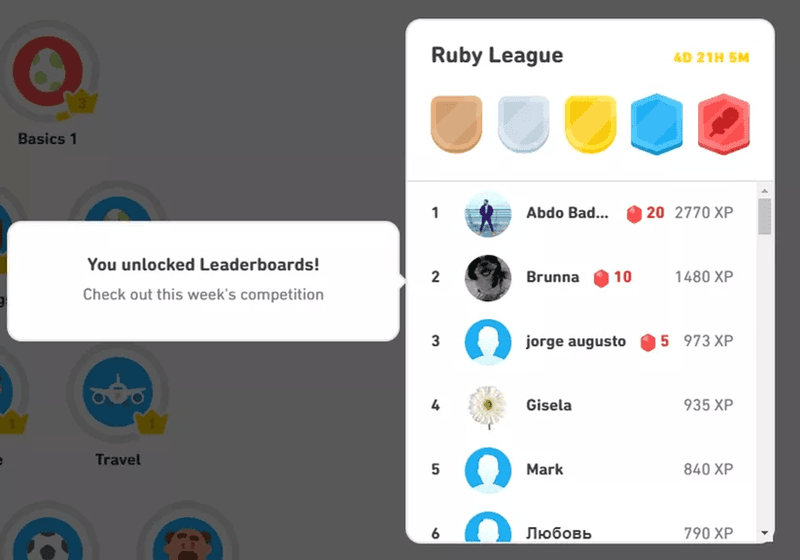
7. Keep the balance
While gamification can greatly enhance user experience, it’s important to maintain balance. Overdoing it can clutter the UI and distract users from their main tasks—causing the opposite effect.
That said, keep your gamification strategy focused and meaningful, don’t try to appeal to everyone, and make sure that each gamification element is adding a positive effect.
Example: LinkedIn
As you can see, LinkedIn uses game elements sparingly. This way, the platform remains professional while still encouraging users to engage and level up their profiles.
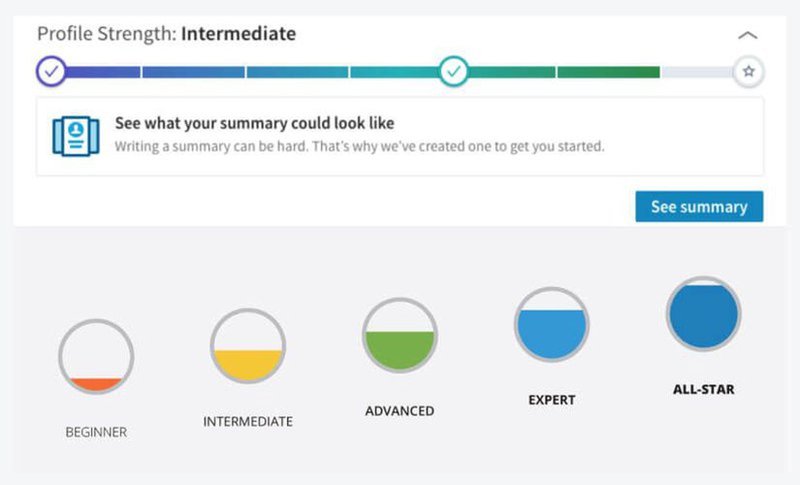
Conclusion
Gamification strategies are not just about making tasks fun—they’re a tool for enhancing customer engagement, satisfaction, and retention, ultimately driving business growth.
From progress bars and leaderboards to personalized experiences and engagement loops, these gamification techniques transform how users interact with a gamification SaaS platform, making the journey enjoyable and rewarding.
Need more time to spend on gamification strategies? Try booking a Userpilot demo to streamline and automate most of your product management tasks without coding!




